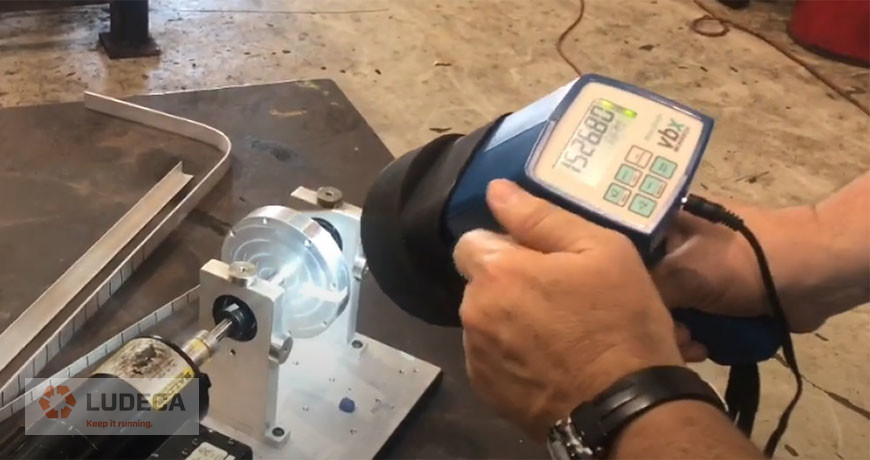
Who Invented Stroboscope? A Fascinating Journey Through Time
Share
The intriguing question who invented stroboscope delves into the world of physics and visual perception. The stroboscope has transformed the way we observe motion, forming the foundation for many industries today, particularly in technology and entertainment. By emitting flashes of light in precise intervals, stroboscopes can create the illusion of motion, which is essential for analyzing rapid processes.
This article captures the essence of the stroboscope - its historical context, inventors, applications, and how it has evolved over the years, making it a vital tool for tech professionals and enthusiasts alike.

The Historical Background of the Stroboscope
Before we unveil the masterminds behind this fascinating device, lets take a moment to look back at its history. The stroboscope is not merely a modern invention but rather a culmination of experiments and concepts dating back centuries.
The Beginnings: Early Theories and Experiments
The concept of the stroboscope can be traced back to the early 19th century. The phenomenon of persistence of vision, which allows us to perceive a series of still images as continuous motion, was first scientifically documented by Simon von Stampfer with his invention of the stroboscope in 1832. His original device used a revolving disc with slits to create a visual illusion of motion.
However, the quest for understanding motion didnt end there. Numerous inventors pursued this idea, leading to the refinement of the stroboscope as we know it today.
Key Figures in the Invention of the Stroboscope
In addition to Simon von Stampfer, several notable figures contributed to the development of the stroboscope:
- Joseph Plateau: A Belgian physicist who improved upon the stroboscope concept with the invention of the Phenakistoscope in 1832, which created the illusion of motion through a series of sequential images viewed in a mirror.
- mile Reynaud: He further advanced the technology with his invention of the Praxisoscope, which was one of the first devices to project animated sequences, shaping early cinema.
- Thomas Edison: While renowned for his work with the light bulb, Edison also contributed to motion picture technology, understanding and harnessing the principle behind the stroboscope for early films.
Understanding the Mechanics: How Stroboscopes Work
A stroboscope operates on a principle rooted in the science of light and motion. By emitting rapid flashes of light at set intervals, it allows observers to freeze motion in time, making it particularly useful in industrial settings for monitoring high-speed processes. For a deep dive into how these devices function, check out this insightful article on how stroboscopes work.
Applications in Various Fields
The uses of stroboscopes extend into many fields. Here are a few significant applications:
- Industrial Testing: Commonly used for observing rotating machinery, helping detect faults before they cause equipment failure.
- Entertainment: Essential in the film and music industries to create visually captivating effects.
- Medical Research: Utilized in studies of human and animal motion, aiding in physical therapy and biomechanics.
For more information on the applications of stroboscopes, visit this introduction to stroboscopes.
The Evolution of Stroboscope Technology
From its humble beginnings with simple mechanical devices, the stroboscope has undergone significant advancements, particularly with the advent of digital technology. Today, modern stroboscopes provide enhanced accuracy, portability, and ease of use, enabling tech professionals to conduct precise measurements and analyses.
Digital Stroboscopes vs. Mechanical Stroboscopes
The distinction between digital and mechanical stroboscopes marks a significant advancement in the field. Digital stroboscopes integrate advanced features such as programmable flash rates, memory storage, and data analysis capabilities, making them indispensable in various professional settings. In contrast, traditional mechanical stroboscopes rely solely on basic mechanical function.
For a comprehensive overview of the types of stroboscopes available, refer to this article on the stroboscope guide.

FAQs About Stroboscopes
1. Who were the inventors of the stroboscope?
The stroboscope was notably developed by Simon von Stampfer and further refined by subsequent inventors like Joseph Plateau and Thomas Edison.
2. What are the primary uses of a stroboscope today?
Stroboscopes are mainly used in industrial testing, entertainment, and medical research, providing crucial visual data analysis.
3. How has stroboscope technology evolved over time?
Stroboscope technology has evolved from mechanical devices to sophisticated digital instruments that offer enhanced capabilities for users.
As an Amazon Associate, I earn from qualifying purchases.
